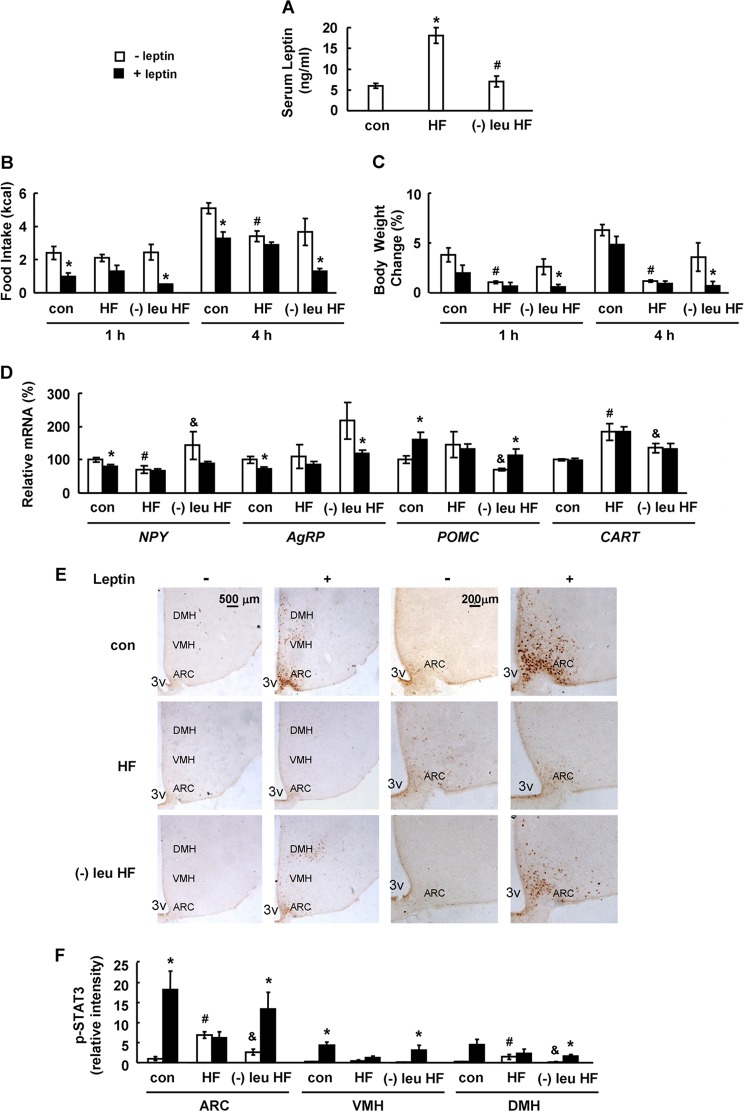FIGURE 2.
Leucine deprivation restores leptin signaling in mice under conditions of leptin resistance induced by HFD. Mice were fed a control or HFD for 16 weeks, followed by feeding control diet (con), HFD (HF), or a HFD without leucine ((−)leu HF) for 7 days. These mice were measured by serum leptin levels (A) or were fasted for 24 h prior to intraperitoneally injecting PBS (− leptin) or 5 mg/kg leptin (+ leptin), followed by measuring food intake and body weight 1 and 4 h post-injection (B and C), or analyzing levels of mRNA and STAT3 phosphorylation for 45 min post-injection in D and E. Data are mean ± S.E. (n = 5–7 for each group in A–D; n = 3 or 4 in E and F). Statistical significance was determined by ANOVA followed by the SNK test. *, p < 0.05 for the effect of HFD diet versus control diet. #, p < 0.05 for the effect of leucine-deprived HFD versus HFD for A. *, p < 0.05 for the effect of leptin-treated group versus PBS-treated group under the same diet. #, p < 0.05 for the effect of PBS-treated HFD versus PBS-treated control diet. &, p < 0.05 for the effect of PBS-treated (−)leu HFD versus PBS-treated HFD for B–F. A, serum leptin levels; B, food intake; C, body weight change; D, hypothalamic neuropeptide changes; E, immunohistochemistry staining for p-STAT3 in hypothalamus. 3V, third ventricle. Images shown are representative of several animals for each group. Scale bar, 500 and 200 μm. F, quantitation of the intensities of positive p-STAT3 signals within the ARC, VMH, and DMH regions as marked in E. Relative signal intensities are quantified using Image-Pro Plus software from sections at Bregma −1.34 to −2.06 mm for each indicated treatment group.

